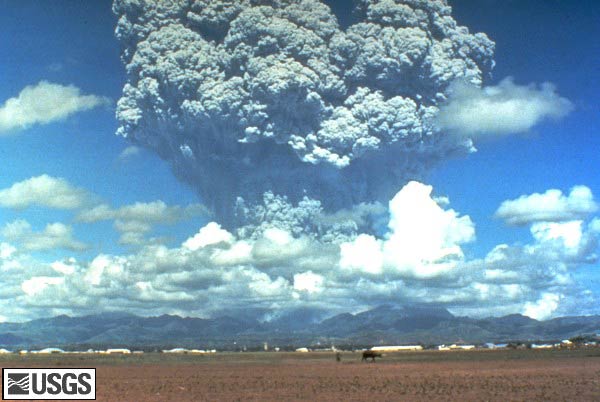Volcano Plumes Spin Like Tornadoes

The columns of ash and gas that spew from erupting volcanoes behave just like another force of nature, tornados, a new study suggests.
Volcanic plumes have been known to spawn waterspouts and dust devils, as well as sheaths of lightning around their roiling debris clouds, but scientists didn't know why.
Images of the 2008 eruption of Mount Chaiten in Chile and a 200-year-old report of an eruption in the Azores by a sea captain that described these features have helped scientists at the University of Illinois solve the puzzle. This evidence indicates that the volcanic plume rotates like a tornado system, a phenomenon the researchers call a "volcanic mesocyclone."
"What happens in tornadic thunderstorms is analogous to what happens in strong volcanic plumes," said lead author of the study, Pinaki Chakraborty, a postdoctoral researcher at Illinois.
A volcanic plume consists of a vertical column of hot gases and dust topped by an umbrella-like structure. A volcanic mesocyclone sets the entire plume rotating, causing it to spawn waterspouts or dust devils and group together the electric charges in the plume to form a sheath of lightning.
Satellite images of the 1991 eruption of Mount Pinatubo in the Philippines confirm the rotation of strong volcanic plumes, the researchers found. The hourly images show that Pinatubo's umbrella was rotating about its center.
They also show that the umbrella shape became distorted as it rotated, morphing into a more lobe-like structure. Such lobate umbrellas have also been seen in satellite images of other volcanic eruptions, including Mount Manam in Papua New Guinea, Mount Reventador in Ecuador and Mount Okmok in the Aleutian Islands of Alaska.
Get the world’s most fascinating discoveries delivered straight to your inbox.
Using satellites to image future eruptions will help scientists better understand the evolution of the umbrella shapes. Tools commonly used to study thunderstorms could also be used to study volcanic eruptions.
"The structure and dynamics of volcanic mesocyclones, as well as the presence of lightning sheaths, might be verified with Doppler radar and lightning mapping array, two technologies that have been scarcely used in volcanology," said study team member Gustavo Gioia.
The researchers' findings are detailed in the March 26 issue of the journal Nature. Their work was funded in part by the National Science Foundation and Walgreen Chair funds.
- Volcano Quiz Part 1, Part 2
- Volcano News, Images and Information
- Video: Alaska's Restive Mount Redoubt



